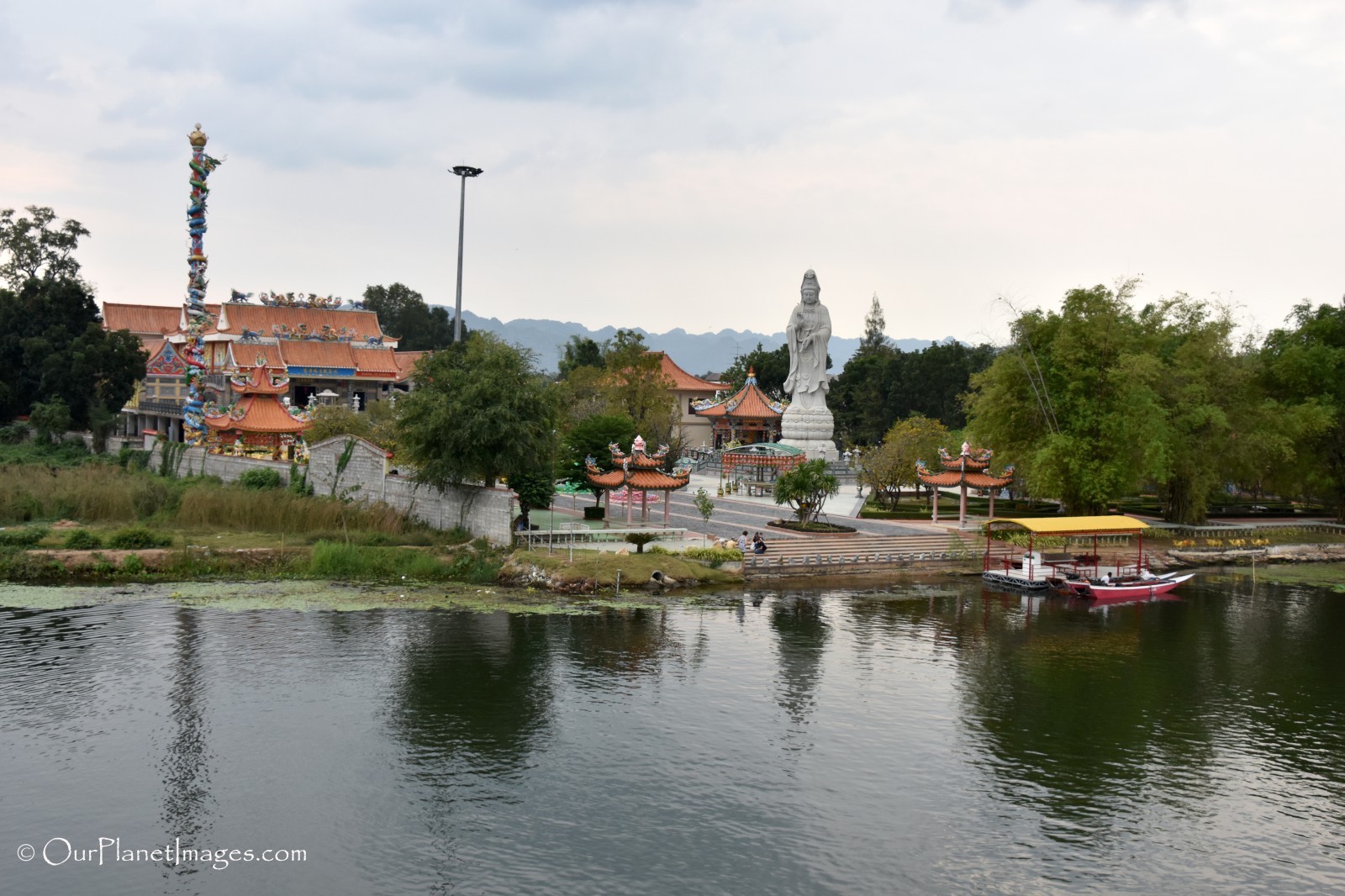The bridge over the River Kwai is about 90 miles (144 Km) from Bangkok, Thailand and is near the starting point for the railroad that was use in World War II to take supplies to Thanbuyazat, Burma (now Myanmar). The railroad ran for a distance of 258 miles (415 Km) through thick jungle terrain. The railroad has historical significance because it was built by Allied prisoners of war (POWs) and forced civilian laborers from Thailand, Burma, India, China, Indonesia, and Malaysia. During the construction of the railroad, thousands of workers died and the railroad was named the “Death Railway”.


The Bridge over the River Kwai became famous by the 1957 multi-Oscar winning film of the same name. While the film was highly popular, Hollywood is not known for getting all of the facts right in its films. In the case of the film “The Bridge over the River Kwai” they had some significant historical errors. The most significant are:
- There is no river in Thailand named “Kwai”. The name of the river on which the bridge stands was originally called the Mae Khlong River in the Khwae Valley and in the 1960s the river was renamed to the Khwae River.
- Many tourist visiting the bridge expect to see a bridge built of wood and bamboo similar to the movie but the actual bridge is a 1,000 ft. (300 m) black steel arched bridge.
- The bridge was blown up but not by a demolition squad as the movie suggests. The bridge was heavily damaged because it was hit repeatedly by Allies war planes.
The curved spans on the bridge are 1943 originals and the two straight spans are replacements from the damage by Allied bombs in 1945. The damaged bridge was renovated by the Thai government in 1946 with two straight spans.

The bridge still regularly carries passenger trains from Bangkok to Nam Tok, Thailand where the line currently ends.



The Bridge over the River Kwai is a very popular tourist attraction and people are allowed to walk onto the bridge and take photos. Having people on the tracks doesn’t stop the trains from crossing the bridge. Each section of the bridge has pedestrian platforms on both sides of the railroad so that people can clear the tracks for the train to cross the bridge.


The train does stop briefly for passengers to load and unload before continuing on.


The Khwae River is a pretty river. Near the bridge on one side is a floating restaurant and across the river from the restaurant is a Buddhist Temple. On the other side of the railroad is a museum dedicated to the bridge and the railroad.




The Dust on My Shoes
Many places where historical event took place have been forgotten. If the event is remembered then there is not much remaining at the site for visitors to see. The historical site where the bridge crosses the River Khwae might have been mostly forgotten if the movie “Bridge over the River Kwai” had not been produced.
The bridge itself is in good condition and seeing an actual train crossing the bridge helps to make the history more real. It would not be as impressive if the railroad tracks had been abandoned and the bridge was in unsafe condition.
Replacing the damaged sections of the bridge with straight structural railing as opposed to making them look like the original makes a visual impact that the bridge had been destroyed and rebuilt.
Thailand has seemingly countless wonderful sites to visit and taking time to see a steel arched bridge might seem an unwise use of time but the bridge itself is not the attraction. The attraction is the historical event that the bridge represents.

History is made by people and visiting historical sites is more about honoring the people’s sacrifices than it is about seeing the places where the event took place.


